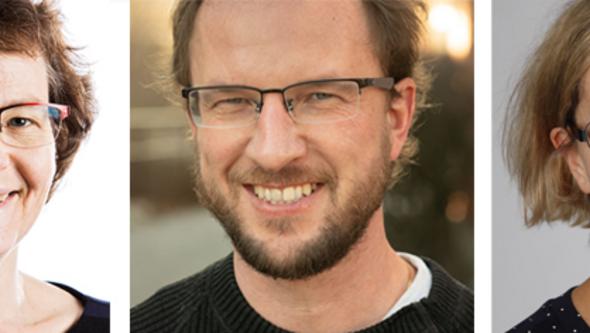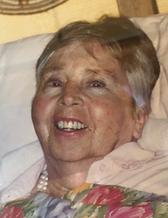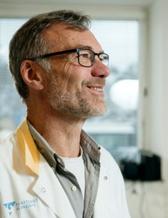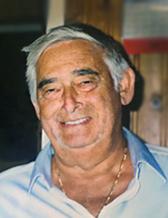- Home
- News and events
- Find news
- Unique donation strengthens rheumatology research
Unique donation strengthens rheumatology research
In the 1990s, Margareta Holtz struggled with severe rheumatoid arthritis, a disease that eventually took her life. A foundation created in her memory has awarded many millions of kronor to Sahlgrenska Academy and helped current rheumatological research to flourish. This year, three researchers will share the foundation’s last award of funding.

Three researchers at the Institute of Medicine have been awarded the final grants distributed from the Reuma Research Foundation Margareta, a total of SEK 1.2 million. The grants are divided equally among Inger Gjertsson and Helena Forsblad D’Elia, both chief physicians and new professors of rheumatology, and the newly recruited researcher and biologist Andrei Chagin.
“Once these grants are paid, we have applied to close the foundation,” says Hans Carlsten, also a chief physician and professor of rheumatology at the Institute of Medicine. “We are doing this because there are no living relatives who can continue to carry out the work of the foundation, and the foundation has achieved its purpose.”
But why did Hans Carlsten become involved in a research foundation, and what connection did he have to Margareta? Let’s rewind the tape.
Formerly a fatal disease

Rheumatoid arthritis, or RA, is an inflammatory disease that often begins in the small joints of the hands and feet but can spread throughout the body. Anyone who becomes ill with RA today usually has a good prognosis. New medications have revolutionized treatment, and most patients can live a largely normal life. But that has not always been the case.
Hans Carlsten remembers the 1980s and 1990s, when RA could cause severe disabilities that required operations, amputations, and prostheses. Hospital stays were long, and so was the rehabilitation. About ten percent of the patients suffered from what was then called severe or malignant RA.
“We took care of extremely ill patients who were confined for a long time and required a lot of treatments and support. They had severe joint destruction, leg ulcers, nerve damage, and inflammation of internal organs. Many died of kidney failure, pulmonary fibrosis, or cardiovascular disease.”
Margareta Holtz suffered from the most severe form of RA. Hans Carlsten remembers her, because he was chief physician and head of the department at Sahlgrenska Hospital that provided her with care. She became seriously ill and died in 1995 at the age of 68. But a few more years passed before the story continued.
Encounter at the Concert Hall

In 1998 Hans Carlsten presented a lecture at the Concert Hall in Gothenburg for the Swedish Rheumatism Association, a patient organization, along with his colleague and good friend Andrzej Tarkowski, who was then professor of rheumatology at the Institute of Medicine.
Margareta’s husband, Hugo Holtz, had listened very attentively, and after the lecture he approached the two physicians to talk. Holtz had started the Reuma Research Foundation Margareta in memory of his wife with the goal of eradicating malignant RA but had not found a satisfactory way to use the money. Hans Carlsten describes a vivid memory of the meeting.
“Hugo thundered up to us on the steps of the Concert Hall. He was a large and powerful man. I’m not saying he was boisterous, but he had a commanding presence. Andrej and I suddenly turned into little boys on the spot. I even remember him saying, ‘Listen, boys, how are we going to solve the puzzle of rheumatism? What support do you need for your research?’”.
Funded individual positions
At that time rheumatology was not a major field of research at Sahlgrenska Academy, and it needed extra support. The foundation solved this by funding an assistant professor position at the Institute of Medicine. Since then, the foundation has continued in the same spirit–helping researchers become established.
After an announcement in open competition, Hans Carlsten filled the first position, and the foundation supported his entire position until 2008. Then his friend Andrzej Tarkowski became seriously ill with cancer, and Carlsten decided to apply for the assignment as head of the Institute of Medicine – a role he also assumed.
The next position, partly funded by the foundation, was a new professorship. It was filled by Lennart Jacobsson, a well-qualified researcher from Lund University who was tasked with strengthening clinical and epidemiological research. Jacobsson, who served as a chief physician and professor at the Institute of Medicine until last year, had a great impact on rheumatological research, especially in treatment of the disease gout.
“Lennart has done a great job of encouraging new doctoral students to become involved and establishing clinical registry research,” Inger Gjertsson said in an earlier interview. “Some who had not previously been interested in an academic career at all suddenly saw the light. Two out of three physicians at the Sahlgrenska Department of Rheumatology and Inflammation Research today have publicly defended a doctoral thesis or are actively involved in research.”
Ripples on the water

In this way the Reuma Research Foundation Margareta has sent out ripples and strengthened research, not only in rheumatoid arthritis, but in the entire field of rheumatology.
This year, two young researchers at the Department of Rheumatology and Inflammation Research, Cristina Maglio and Mattias Svensson, received prestigious starting grants of SEK 6 million each from the Swedish Research Council. Sahlgrenska Academy now has a complete research environment in rheumatology, from basic research to clinical research and epidemiological research in collaboration with Sahlgrenska University Hospital.
According to Hans Carlsten, the foundation has contributed to this positive development, and the timing of the foundation’s work has coincided with a medical revolution.
“RA patients who become as seriously ill as Margareta are rare today. The disease has changed in nature, thanks to new treatments. Of course, we cannot claim all the credit for this, but research is a giant puzzle, and we have contributed some the pieces in the form of new findings. For example, today’s biological pharmaceuticals target molecules that had not been discovered when I started as a rheumatologist.”
Looking for new pieces of the puzzle
Hans Carlsten has personally been involved in creating a better understanding of how estrogen affects the immune system . This has proved to be important for both rheumatoid arthritis and osteoporosis, two diseases that largely affect women.
As he approaches retirement, others are taking on the challenges of research that can contribute to a better life for those suffering from rheumatic diseases. One disease for which we currently lack effective treatment is osteoarthritis. Newly recruited Andrei Chagin will investigate both the mechanisms behind osteoarthritis and how various hormones control bone loss and bone formation.
He is one of the last recipients of funds from the Reuma Research Foundation Margareta and hopes to contribute to new, groundbreaking discoveries.
BY: KARIN ALLANDER
Rheumatology is a collective name for hundreds of diseases, with rheumatoid arthritis (RA) being the most common. The diseases often affect joints, muscles and bones, resulting in pain and difficulty moving. Blood vessels and other vital organs can also be affected. Most rheumatological diseases are inflammatory and some are autoimmune. This means that the body's immune system attacks itself.